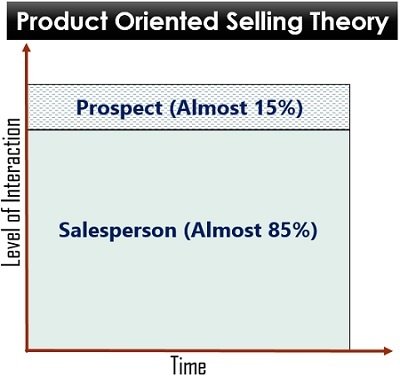Management of Distribution Channel Meaning & Need
In the field of marketing, channels of distribution indicate routes or pathways through which goods and services flow, or move from producers to consumers.
We can define formally the distribution channel as the set of interdependent marketing institutions participating in the marketing activities involved in the movement or the flow of goods or services from the primary producer to the ultimate consumer.
The prime of object of production is its consumption. The movement of product from producer to consumer is an important function of marketing. It is the obligation of the producer to make goods available at right place, at right time right price and in right quantity. The process of making goods available to the consumer needs effective channel of distribution. Therefore, the path taken by the goods in its movement is termed as channel of distribution.
Distribution channels are the network of organizations, including manufacturers, wholesalers, and retailers, that distributes goods or services to consumers. A distribution channel is the network of individuals and organizations involved in getting a product or service from the producer to the customer. Distribution channels are also known as marketing channels or marketing distribution channels.
An entrepreneur has a number of alternative channels available to him for distributing his products. These channels vary in the number and types of middlemen involved. Some channels are short as they directly link producers with customers. Whereas other channels are long and indirectly link the two through one or several middlemen.
In short, the distribution channel can be defined as ‘the path through which goods and services or payment for those goods or services travel from the vendor to the consumers’. Distribution channel can be as short as a direct transaction from the vendor to the consumer, or may include several interconnected intermediaries along the way such as the followings:
- Wholesalers
- Distributors
- Agents and
- Retailers
Need for Selecting an Appropriate Channel of Distribution
It is a fact that the distribution channels are greatly required by the manufacturers. The need for selecting an appropriate channel can be understood on the basis of the parameters considered, which highlight the fact why distribution channels must be selected?
- Attention
Little attention of companies to their distribution channels may damage results such as profit, brand, number of customers etc.
- Imaginative distribution systems
Companies can use imaginative distribution systems to take competitive advantage. For example Dell, Flipkart.com etc. Dell is the best example of revolution in Distribution channel. Dell is selling its products directly to the consumer rather than through retailer.
- Difficult to Replace
Companies can change their products, advertising and Pricing easily but not their distribution channels. It is not an easy task to change distribution channel, franchisees, dealers and retailers.
- Value Addition
Distribution Channel Members can provide greater efficiency in making availability of goods to the target markets through their Contacts, Specialization, experience, and scale of operation. This can add value to the product or service at each level of distribution.
- Reduced number of Channel Transactions
Marketing intermediaries or channel members help to reduce the number of channel transactions.
- Information
Gathering and distributing information is very helpful.
- Promotion
Communication to the consumer regarding product information and offers through advertising and promotion.
- Financial support
Offering financial support for example Purchase on credit, exchange options, purchase using payment plans
- Other
Financing, Physical Distribution and Risk Taking are other parameters that influence a channel selection decision Reduces Distribution cost and time.
Objectives of channels of distributions
The objectives of channels of distributions are discussed as follows:
- Receiving Fast and Accurate Feedback of Information
In order to maintain and provide an efficient distribution system and service, a good and regular. How of relevant information is necessary, which includes inventory levels, sales trends, damage reports, service levels, cost monitoring etc.
-
Making the Product Readily Available to the Market Consumers
To ensuring the product is represented in the right type of outlet or retail store is an important objective of channels of distribution. Having identified the correct marketplace for the goods, the company must make certain that the appropriate physical distribution channel is selected to achieve this objective.
-
Achieving a given Level of Service
Once again, from both the supplier’s and the customer’s viewpoints, a specified level of service should be established, measured, and maintained. The customer normally sees this as crucial and relative performance in achieving service level requirements is often used to compare suppliers and may be the basis for subsequent buying decisions.
-
Enhancing the Prospect of Sales being Made
The most appropriate factors for each product or type of retail store will be reflected in the choice of channel. The general aims are to get good positions and displays in the store; and to gain the active support of the retail salesperson, if required. The product should be “visible, accessible, and attractively displayed’.
Channel choice is affected by this objective in a number of ways:
(i) Does the deliverer arrange the merchandise in the shop?
(ii) Are special displays being utilised?
(iii) Does the product required to be installed, demonstrated or explained?
(iv) Is there a special promotion of the product is required?
-
Minimising Logistics and Total Costs
Costs are very crucially significant as they are reflected in the final price of the product. The selected channel will reflect a certain cost and this cost must be assessed in relation to the type of product offered and the level of service required.
-
Achieving Co-Operation with Regard to any Relevant Distribution Factors
These factors can either be from the supplier’s or the receiver’s point of view and include minimum order sizes, unit load types, product handling characteristics, materials handling aids, delivery access (e.g., vehicle size), and delivery time constraints, etc.


